|

Synopsis:
Three veterans (Fredric March, Dana Andrews, and Harold Russell) find their return home from World War II more challenging than expected. While March’s wife (Myrna Loy) is patient and loyal, his two children (Teresa Wright and Michael Hall) are now grown, and he is frustrated by his work for a bank that doesn’t sufficiently honor servicemen. Andrews — who struggles to find meaningful employment — learns that his war-time bride (Virginia Mayo) is more concerned about partying than settling down, and develops a growing crush on Wright. Meanwhile, Russell — who lost both hands during the war — suffers deep insecurity about the love and acceptance of his kind girlfriend (Cathy O’Donnell).
|
|
Genres, Themes, Actors, and Directors:
- Dana Andrews Films
- Disabilities
- Fredric March Films
- Marital Problems
- Myrna Loy Films
- Small Town America
- Teresa Wright Films
- Veterans
- Virginia Mayo Films
- William Wyler Films
- World War Two
Response to Peary’s Review:
Peary writes that the subject matter of this “superlative Americana” — about “three returning war veterans… who have troubles readjusting to home lives, love lives, and work situations” — is “still extremely relevant”. (Indeed, writing this response review 32 years after the publication of GFTFF, it remains more so than ever.) He notes that “Robert Sherwood’s excellent, Oscar-winning script (adapted from [war correspondent] MacKinlay Kantor’s Glory for Me) was brutally frank for its time, perceptive and extremely poignant”: while “it is sympathetic towards its characters rather than being overly sentimental”, Peary advises viewers to “keep a supply of tissues on hand”. He points out that the film “is honest enough to show that even war heroes who are welcomed home with open arms will have to make an effort to achieve any degree of happiness in postwar America”, and concludes his review by stating that this Best Picture Oscar winner — which Peary nonetheless boots to the curb in his Alternate Oscars, giving the award to It’s a Wonderful Life instead — was “probably the best film of [Wyler’s] distinguished career”.
As Peary notes, the “entire cast is splendid”: “non-actor Russell was voted Best Supporting Actor”, while “March won Best Actor Oscar” for his performance — and while Peary opts for Jimmy Stewart’s leading role in It’s a Wonderful Life instead, he does note in Alternate Oscars that March was, “as usual”, a “strong, commanding presence” while also displaying tenderness and revealing “insecurities rarely evident in his earlier films”. Peary points out that “Loy, further establishing her ‘perfect wife’ image, deserved an Oscar as well, but didn’t even get a nomination”. Finally, in GFTFF, Peary details several memorable scenes among many from the movie — including the tear-jerking “reunion scene” between Loy and March; Andrews “walking through an airplane graveyard”; “handicapped Russell allowing his sweet, loyal girlfriend… to take off his metal arm attachment and put him to bed”; and “March and Loy telling their grown daughter, Teresa Wright, that their relationship hasn’t been as easy as she assumed”. I’m also especially fond of the wonderfully prolonged homecoming scene opening the film, which effectively highlights both the reticence and hope felt by these men as they returned to the land and people they risked their lives to defend.
Note: Be sure to check out the short documentary film — “Diary of a Sergeant” — that inspired Wyler to cast Russell.
Redeeming Qualities and Moments:
- Fine performances across the board

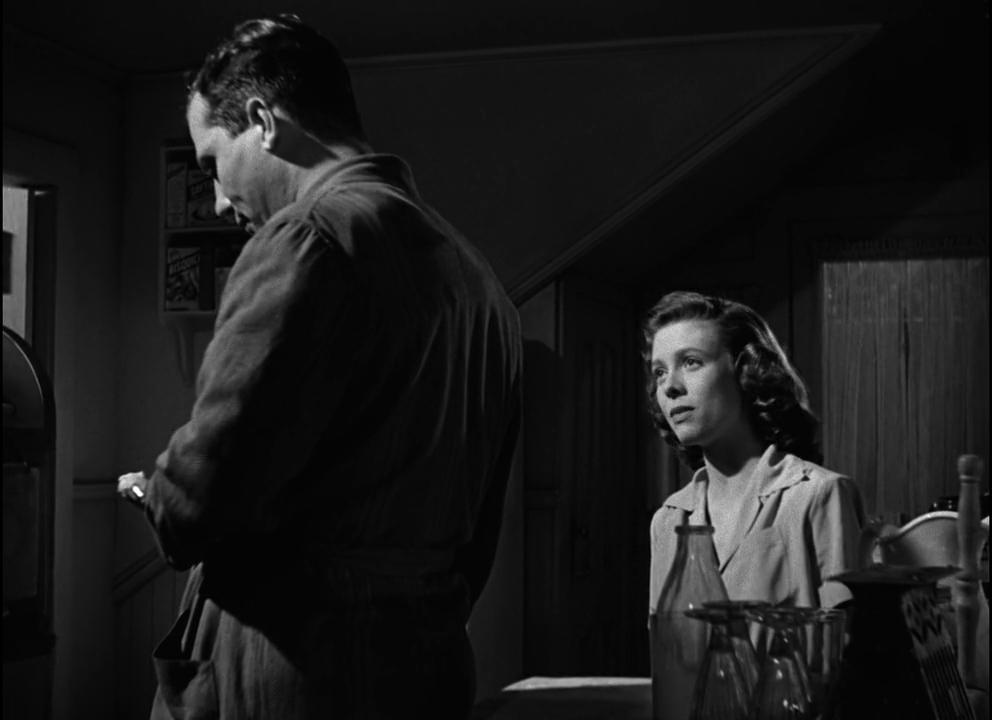
- Wyler’s strong direction
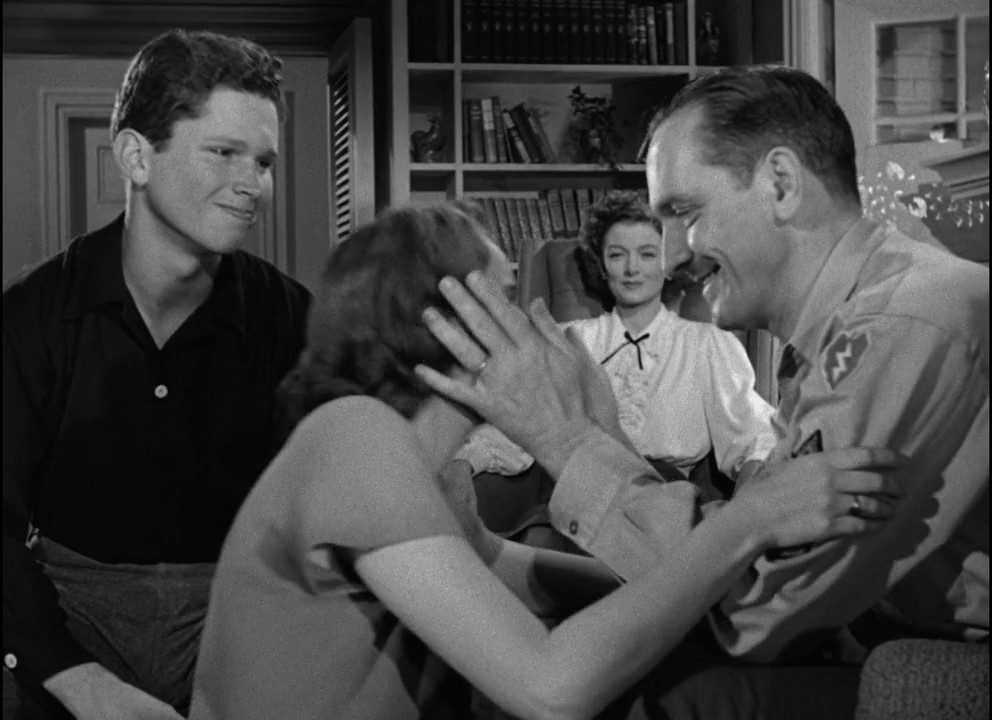
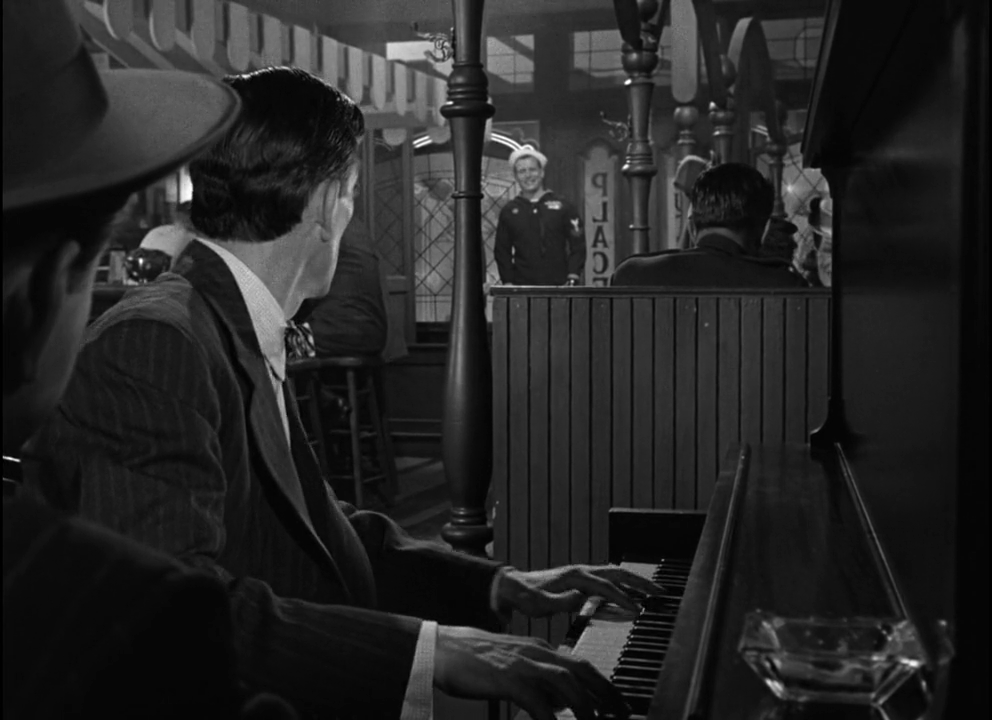
- Gregg Toland’s cinematography
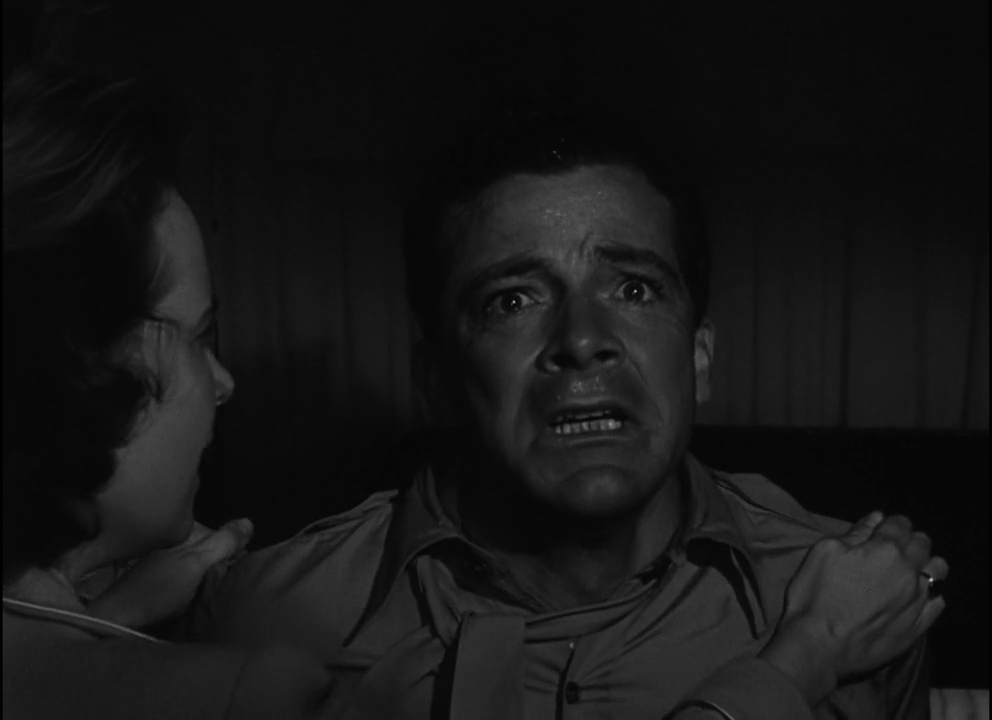
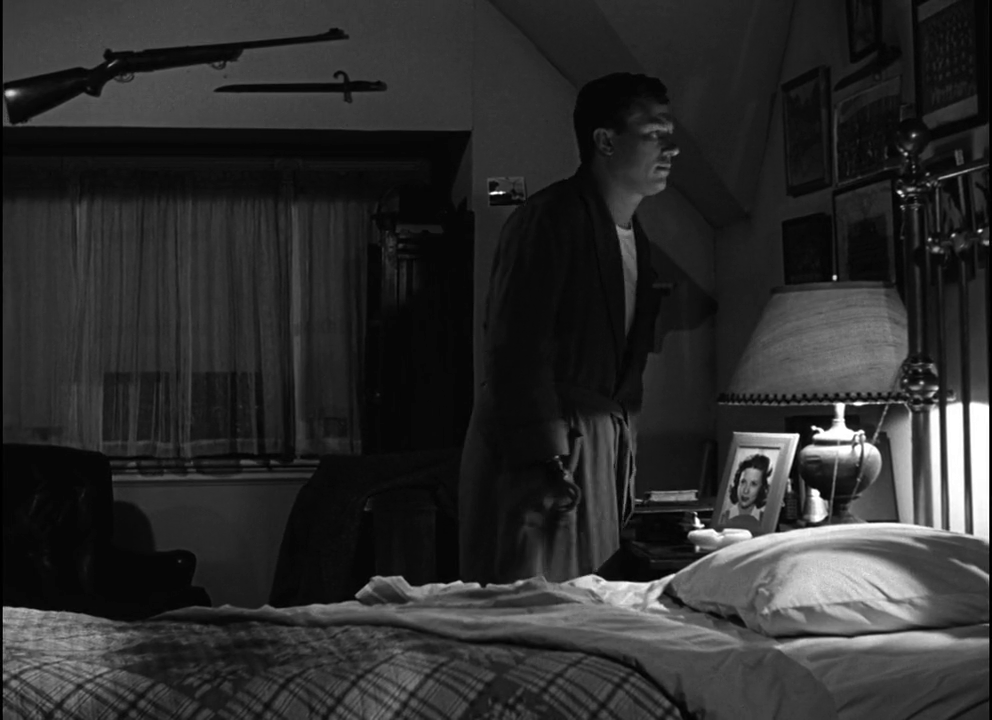
- Many powerfully affecting scenes


Must See?
Yes, as an enduring and deserved classic.
Categories
(Listed in 1001 Movies You Must See Before You Die)
Links:
|









2 thoughts on “Best Years of Our Lives, The (1946)”
A no-brainer once-must (at least), for its solid place in cinema history and for simply being a well-made film in all aspects.
The overriding achievement of this 3-hour film is that it remains consistently compelling throughout – no small feat for a film that is essentially *all talk* and has no real plot. What it does have is writer Sherwood’s intricately observed characters (both major and minor) who have refreshing authenticity. That, combined with Wyler’s boundless sensitivity, makes for a memorable film experience. ~and, I agree, one that is still relevant.
One of my favorite scenes (although I can’t think of a scene in the film that I don’t like) is a small one between Mayo and Wright that happens in ‘the ladies room’ of a nightclub. Of course, the real reason they’re there is to ‘scope each other out’ but what we find out in a space of moments is what makes these women tick as human beings. (Watching Mayo in this scene, I’m reminded of what Mike Nichols did for Ann-Margret in ‘Carnal Knowledge’; he pulled out her potential as an actress. Mayo was never really challenged much during her career but Wyler gets more out of her; she would soon use some of what she learned here in ‘White Heat’.)
This isn’t a film I return to often but it grabs me and holds me whenever I do watch it. I like its realness (well, except for something like Andrews and Wright falling in love when there’s been no real time for that to happen – but that’s a ‘flaw’ I’m willing to overlook in this case). I like how the film deliberately takes its time so that we can really get acquainted with its characters, just as the (main) characters themselves are getting re-acquainted with the lives they left behind. Overall, it’s a very compassionate work.
Agreed, a must see as a classic drama and probably one of the first films to show the aftermath of war and the impact it has on individuals, their families and communities.